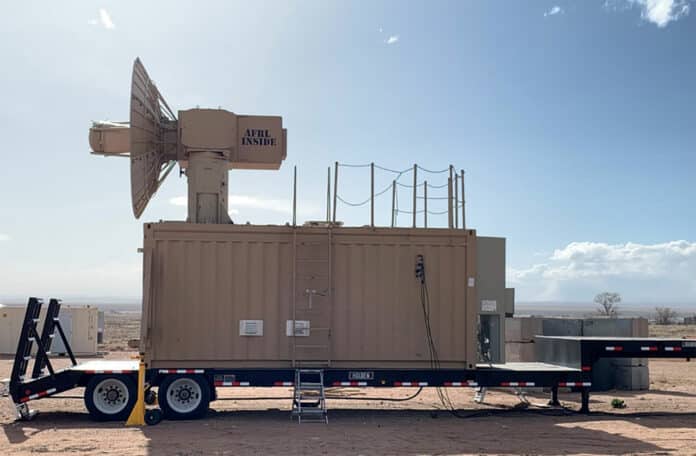The Air Force Research Laboratory (AFRL) conducted a demonstration of its high-power microwave counter-drone weapon, the Tactical High-power Operational Responder (THOR), engaging a swarm of multiple targets.
As the threat of weaponized drone swarms continues to evolve, leaders from across the Department of Defense are working closely to ensure we are exploring different technologies like directed energy to support the needs of the warfighter in the future against such threats.
One of these directed energy weapons is THOR, which uses a powerful microwave burst to produce an unspecified “counter-electronic effect” with the intention of disabling in-coming hostile drones. Once the target is identified, the silent weapon discharges in a nanosecond, and the impact is instantaneous.
THOR stows completely in a 20-foot transport container, which can easily be transported in a C-130. The system can be set up within three hours and has a user interface that has been designed to require minimal user training. The overall cost to develop the technology was approximately $18 million dollars.
During the demonstration, the THOR system was operated by Captain Eric Plummer, a test engineer with AFRL’s Directed Energy Directorate. Under realistic conditions, it was set against a swarm of multiple targets at the Chestnut Test Site, Kirtland Air Force Base, New Mexico.
“The THOR team flew numerous drones at the THOR system to simulate a real-world swarm attack,” said Adrian Lucero, THOR program manager at AFRL’s Directed Energy Directorate. “THOR has never been tested against these types of drones before, but this did not stop the system from dropping the targets out of the sky with its non-kinetic, speed-of-light High-Power Microwave, or HPM pulses.”
“THOR was exceptionally effective at disabling the swarm with its wide beam, high peak powers, and fast-moving gimbal to track and disable the targets,” said Lucero.
“THOR was extremely efficient with a near continuous firing of the system during the swarm engagement,” said Capt. Tylar Hanson, THOR deputy program manager. “It is an early demonstrator, and we are confident we can take this same technology and make it more effective to protect our personnel around the world.”
